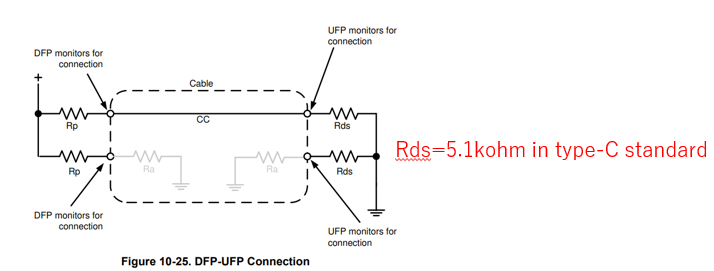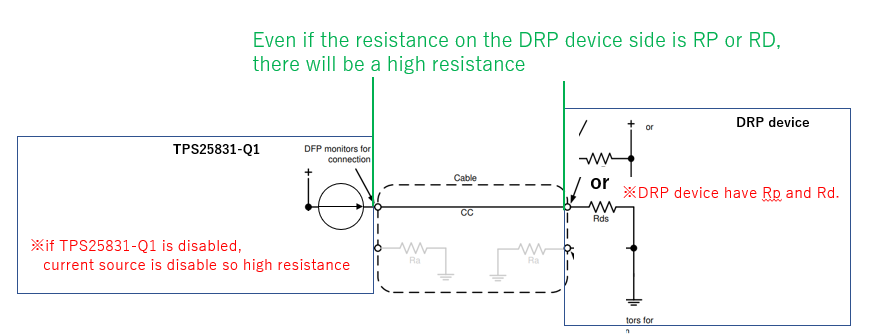Hi Team,
I have two questions.
-------
[Q1]
I would like to know the actual resistance value between CCx(CC1/2) and GND.
Could you please let us know if you have any information?
[Q2]
If the TPS25831-Q1 is turned off with the DRP device connected,
there is a phenomenon that power is supplied from DRP device, which was UFP.
Is it possible for DRP device to unintentionally switch from UFP to DFP?
I guess that DRP device violates the Type-C standard, but is it possible that TPS25831-Q1 is the cause?
-------
Regards,
Hide



